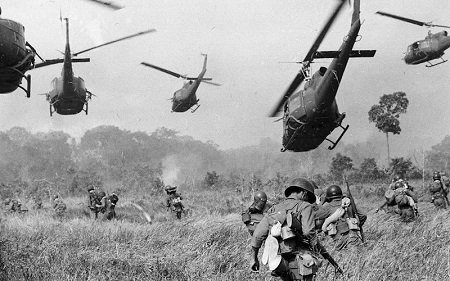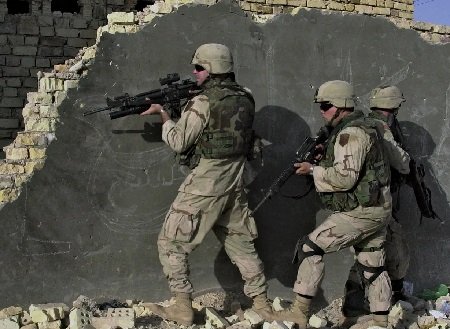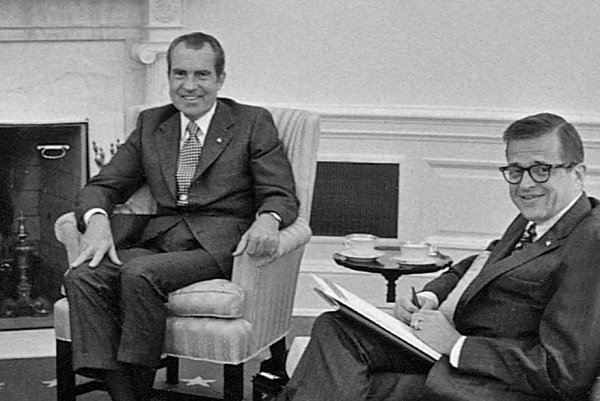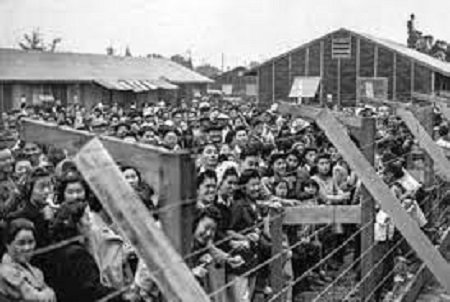Throughout American history, there have been several significant mistakes and moments of embarrassment that have shaped the nation’s narrative. From military interventions gone wrong to systemic injustices and political scandals, these events serve as reminders of the fallibility of leadership and the importance of learning from past mistakes. Whether it is the Vietnam War, the Watergate Scandal, or the treatment of Native Americans, acknowledging these errors allows for critical reflection and the pursuit of a more just and equitable future. Understanding the shortcomings of the past is essential in shaping a more informed and responsible path forward for the United States.
The Vietnam War
The Vietnam War, spanning from 1955 to 1975, remains one of the most consequential and controversial conflicts in American history. It began with the United States intervention to support South Vietnam against communist North Vietnam and its allies. However, the war quickly escalated into a grueling and protracted conflict that claimed the lives of over 58,000 American soldiers and millions of Vietnamese civilians.
The Vietnam War exposed the limitations of U.S. military power and shattered the nation’s confidence in its government’s decision-making. It sparked widespread protests and dissent within the United States, as citizens questioned the justifications for the war and its human costs.
Moreover, the war had a profound impact on American society, deepening divisions and mistrust. It highlighted the failures of the military strategy and the use of controversial tactics such as the widespread deployment of napalm and Agent Orange.
The Vietnam War serves as a poignant reminder of the complexities of warfare, the importance of diplomacy, and the need to critically assess military interventions to avoid repeating past mistakes.
The Iraq War
The Iraq War, which began in 2003 and lasted until 2011, was a highly controversial military intervention by the United States and its allies. The war was launched under the premise of eliminating weapons of mass destruction (WMDs) believed to be possessed by Iraq, as well as removing Saddam Hussein from power. However, no WMDs were found, and the intelligence used to justify the war was later discredited.
The Iraq War resulted in significant human and financial costs. It led to the deaths of thousands of American soldiers, and tens of thousands of Iraqi civilians, and destabilized the region. The aftermath of the war saw sectarian violence, the rise of extremist groups, and a protracted insurgency.
The Iraq War became a point of contention, both domestically and internationally, with critics arguing that it was based on false pretenses and a flawed understanding of the region. The war’s legacy continues to shape discussions on foreign policy, military interventions, and the consequences of unilateral actions in the modern world.
The Bay of Pigs Invasion
The Bay of Pigs Invasion, which took place in April 1961, was a failed military operation orchestrated by the United States against the government of Fidel Castro in Cuba. The invasion was intended to overthrow Castro’s communist regime by supporting a group of Cuban exiles. However, the operation quickly turned into a disaster.
The Bay of Pigs Invasion suffered from inadequate planning, faulty intelligence, and insufficient support. The Cuban government, forewarned of the attack, swiftly countered the invaders, resulting in a decisive defeat for the U.S.-backed forces. The failure of the invasion was a major embarrassment for the United States, highlighting the shortcomings of its covert operations and damaging its reputation globally.
The Bay of Pigs Invasion ultimately strengthened Castro’s position in Cuba and deepened tensions between the United States and Cuba, leading to the deterioration of diplomatic relations for decades. It remains a cautionary tale of the consequences of ill-conceived military interventions and covert operations.
The Watergate Scandal
The Watergate Scandal, unfolding from 1972 to 1974, was a political crisis that rocked the United States and resulted in the resignation of President Richard Nixon. The scandal originated from a break-in at the Democratic National Committee headquarters in the Watergate complex, which was later revealed to be orchestrated by members of Nixon’s administration.
As investigations unfolded, it became clear that the Nixon administration was involved in a range of illegal activities, including obstruction of justice, abuse of power, and the creation of a secret surveillance apparatus. The release of secret White House tapes further incriminated Nixon, revealing his direct involvement in the cover-up.
The Watergate Scandal eroded public trust in the government, showcased the importance of a free press, and highlighted the accountability mechanisms necessary to maintain a healthy democracy. The event served as a watershed moment in American history, leading to reforms, increased scrutiny of executive power, and a renewed emphasis on transparency and ethics in public office.
See also: 10 Most Important Supreme Court Cases in US History
The Great Depression
The Great Depression, spanning from 1929 to the late 1930s, was the most severe economic downturn in modern history. Triggered by the stock market crash of October 1929, the depression had devastating effects worldwide. It resulted in widespread unemployment, business failures, and a sharp decline in production and trade.
The Great Depression was caused by a combination of factors, including excessive speculation, overproduction, unequal distribution of wealth, and a collapse in global trade. The impact was felt across various sectors, leading to mass poverty, homelessness, and despair.
Government responses varied, with some implementing austerity measures while others embraced interventionist policies. The New Deal, introduced by President Franklin D. Roosevelt, aimed to alleviate suffering through job creation, financial reforms, and social welfare programs.
The Great Depression marked a turning point in economic thinking, leading to the development of Keynesian economics and a more active role of government in stabilizing the economy. Lessons learned from this catastrophic event continue to shape economic policies and regulations to prevent similar crises.
Japanese Internment during World War II
Japanese Internment during World War II was a dark chapter in American history. Following the attack on Pearl Harbor in 1941, President Franklin D. Roosevelt signed Executive Order 9066, which authorized the forced relocation and internment of over 120,000 Japanese Americans, the majority of whom were U.S. citizens.
These innocent individuals, including women, children, and the elderly, were unjustly uprooted from their homes and confined to internment camps across the country. They were subjected to harsh conditions, loss of property, and the violation of their civil liberties.
The internment of Japanese Americans was fueled by prejudice, fear, and wartime hysteria, rather than any evidence of disloyalty. It was a grave violation of their constitutional rights and a reflection of racial discrimination.
In the years following the war, the injustice of Japanese internment became widely recognized. The U.S. government issued a formal apology and provided reparations to surviving internees and their families in an effort to acknowledge the grave error committed and ensure it is never repeated. The legacy of Japanese internment serves as a reminder of the importance of upholding civil liberties, combating racism, and preserving the principles of justice in times of crisis.
Slavery and Jim Crow Laws
Slavery and Jim Crow Laws represent two intertwined and deeply shameful periods in American history. Slavery, which lasted from the early colonial era until the Civil War, involved the brutal enslavement of millions of Africans and African Americans, treating them as property and denying them basic human rights.
Even after the abolition of slavery, Jim Crow Laws were enacted in the late 19th and early 20th centuries, enforcing racial segregation and systemic discrimination against African Americans. These laws perpetuated racial inequality, denying access to education, voting rights, employment, and public facilities based on skin color.
Slavery and Jim Crow Laws were rooted in racism and white supremacy, causing immense suffering, dehumanization, and generational trauma. The Civil Rights Movement of the 1950s and 1960s brought about significant changes, challenging and dismantling these unjust systems.
The legacy of slavery and Jim Crow Laws continues to shape American society, as the fight for racial justice and equality persists. Recognizing and addressing these historical injustices is essential for fostering a more inclusive and equitable society.
The Trail of Tears
The Trail of Tears was a tragic event in American history that took place in the 1830s. It involved the forced removal of Native American tribes, particularly the Cherokee Nation, from their ancestral lands in the southeastern United States to designated Indian Territory, which is now part of present-day Oklahoma.
Driven by the United States government’s policy of Indian Removal, thousands of Native Americans were forcibly relocated, often under harsh conditions and with inadequate provisions. The journey resulted in immense suffering, illness, and death, earning the name “Trail of Tears” due to the immense grief and loss experienced by the Native peoples.
The Trail of Tears represents a dark period of injustice and oppression, violating the sovereignty and rights of indigenous peoples. It stands as a stark reminder of the devastating impact of colonization and the continued struggle for recognition, respect, and justice for Native American communities. Recognizing this historical trauma is crucial for fostering reconciliation and promoting a more inclusive and equitable society.
The Salem Witch Trials
The Salem Witch Trials, which occurred in colonial Massachusetts in 1692, was a tragic and infamous episode in American history. During this period, a wave of hysteria swept through the town of Salem, leading to the execution of 20 people accused of witchcraft.
The trials were fueled by religious fanaticism, social tensions, and superstitions prevalent at the time. Fear and paranoia escalated as accusations of witchcraft spread, resulting in a flawed judicial process that denied accused individuals their basic rights.
The Salem Witch Trials exposed the dangers of mass hysteria and the consequences of unchecked prejudice and intolerance. Innocent lives were lost, families torn apart, and the fabric of the community irreparably damaged.
In the aftermath of the trials, there was a collective sense of regret and shame. The event stands as a cautionary tale, reminding us of the importance of due process, the presumption of innocence, and the dangers of scapegoating and unfounded accusations.
You may also like: Top 10 worst prisons in the United States

The Treatment of Native Americans
The treatment of Native Americans throughout American history has been marked by a long and painful legacy of colonization, dispossession, and systemic oppression. From the arrival of European settlers to the present day, Native American tribes have faced forced removal from their ancestral lands, broken treaties, and the loss of their cultural heritage.
The policy of Indian boarding schools in the late 19th and early 20th centuries aimed at assimilating Native American children by forcibly removing them from their families and suppressing their cultural practices, resulting in significant trauma and cultural disruption.
Furthermore, the economic exploitation of Native American lands and resources, along with discriminatory policies and neglect of their well-being, has perpetuated poverty and inequality within Native communities.
Recognizing and addressing this historical injustice is crucial for promoting reconciliation and social justice. It requires honoring treaty rights, empowering Native communities, and fostering a genuine understanding and respect for Native American cultures and traditions.
Conclusion
In conclusion, the 10 biggest and most embarrassing mistakes in American history serve as powerful lessons for the nation. While these events may evoke shame and disappointment, they also present an opportunity for growth, reflection, and a commitment to rectifying past wrongs. By acknowledging and addressing these mistakes, America can strive for a more inclusive, just, and compassionate society, guided by the lessons learned from its own history. Only through this process can the nation forge a brighter and more equitable future.








